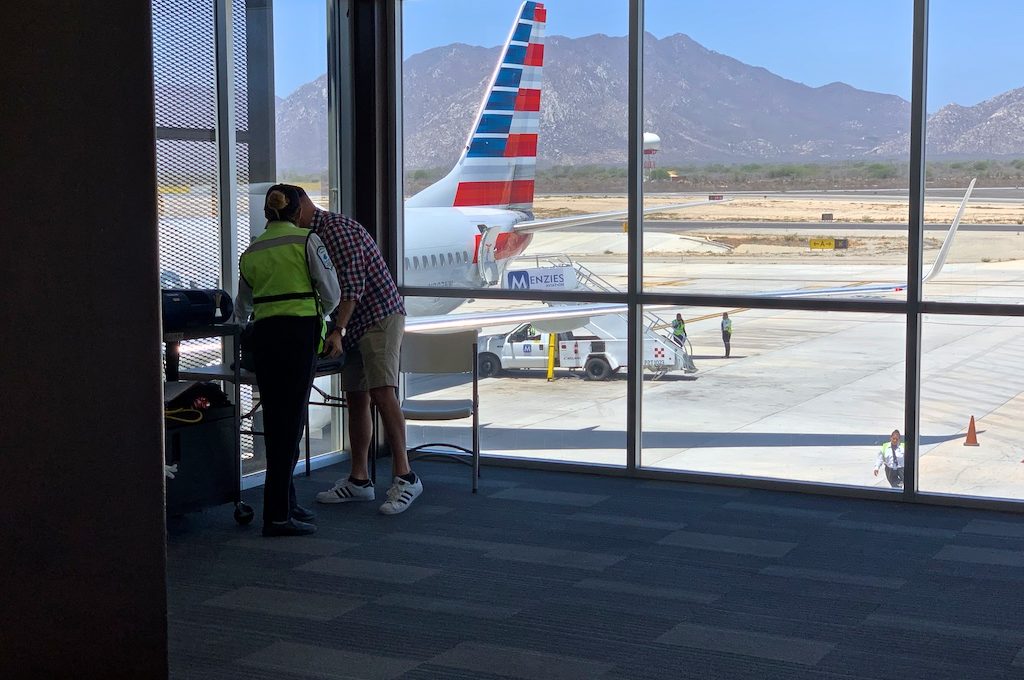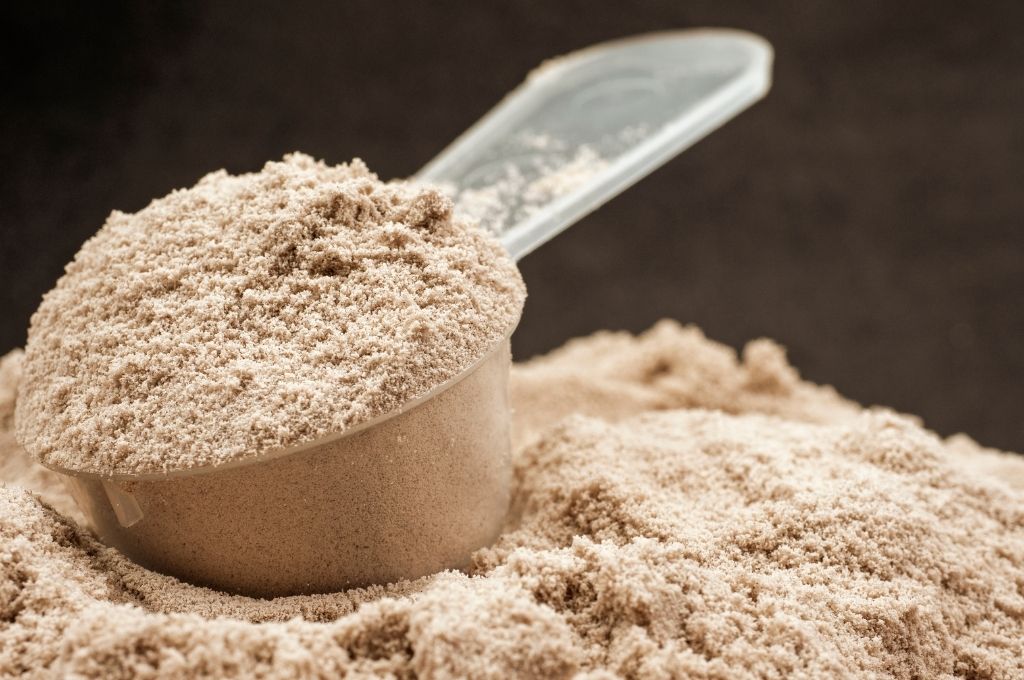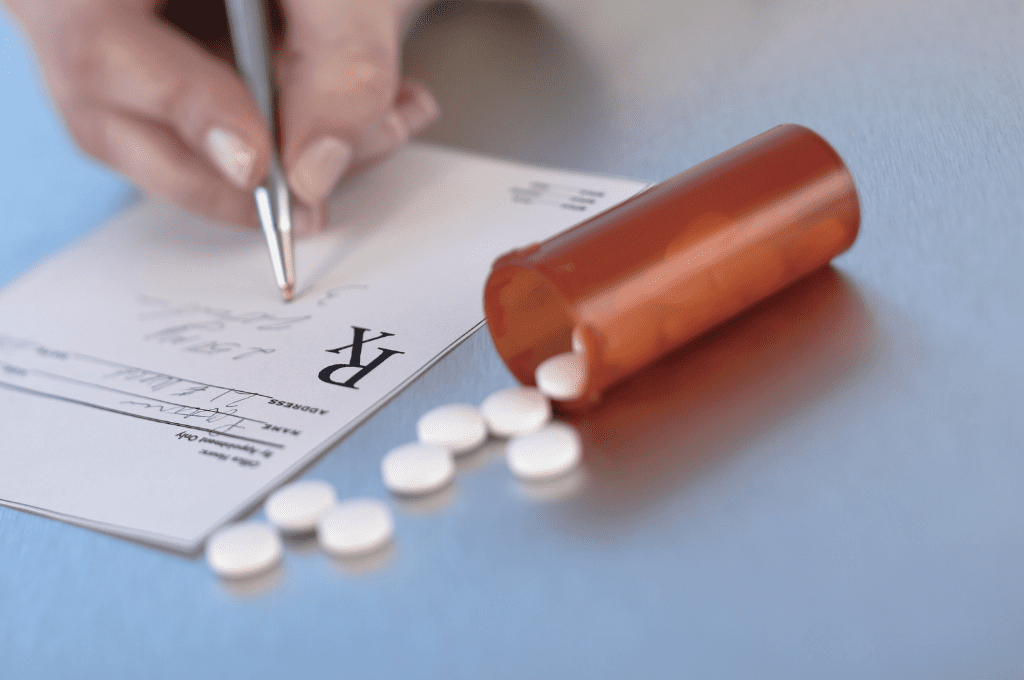Do you ever worry about getting flagged by TSA when making your way through an airport?
Well, there’s quite a few things that could potentially trigger you getting flagged by a TSA agent. Some obvious, some not so obvious.
In this article, I’ll break down several different reasons why you might get flagged and give you some insight into how to avoid some of these.
Table of Contents
What does it mean to get “flagged” by TSA?
Getting “flagged” by TSA could mean a few different things.
But for the most part getting flagged by TSA just means that you or your personal belongings will experience some type of additional screening when going through the airport.
As shown in more detail below, this additional screening could be caused by things like:
- Your name matching a name of interest in a database
- You raising suspicions while going through airport security
- Your bag getting flagged when going through an x-ray machine
And with that clarified, below are several different reasons you might get flagged.

Tripping the system during a background check
Before you even arrive at the airport, you could be flagged by TSA.
For example, your name could be on some type of government watchlist which forces you to undergo additional screening every time you head through the airport.
Other times, you could engage in some type of suspicious travel activity that triggers an additional screening which could include things like:
- Visits to high-risk countries
- Unusual travel patterns (last minute one-way flight)
- Paying cash for tickets
TSA agents could also be put on a “BOLO” alert to look for certain types of people.
For example, if there was a wanted fugitive suspected of heading to the airport, they could be informed to be on the lookout for them. If you happen to be wanted or look like someone who is, you could be flagged once you arrive at the airport and authorities could bring you in for questioning.
If you feel like you are repeatedly getting targeted for additional screening, you can apply for a redress number. But in some situations, you just have to deal with the randomness that often comes with additional screening.
Showing signs of nervousness
If you are sweating bullets and giving off an overall anxious vibe when going through a security checkpoint, you could draw attention to yourself which could result in you getting a closer screening.
TSA has a Behavior Detection (BD) program which trains TSA agents to “identify anomalous behaviors by observing passengers and comparing what they see to an established behavioral baseline.”
The goal is to “identify high-risk travelers and subject them to additional screening” and they sometimes utilize things like a checklist to help identify suspicious behavior.
This type of behavior could include things like:
- Body odor
- Exaggerated yawning
- Excessive throat clearing
- Widely open staring eyes
- Exaggerated or excessive grooming gestures
- Pale face
- Rubbing or wringing of hands
This is a tough one for people who struggle with anxiety and get triggered going through airport security.
Undoubtedly, some unfortunate souls have been pulled aside for looking suspicious even though they are just reacting to the stressful experience of going through security.
Traveling with too much cash money
Some people who travel with a lot of cash do so because they are engaged in illegal activities such as drug dealing or some other type of black market transactions that wouldn’t make their mom too proud.
However, in the past there have been reports of TSA agents seizing cash from passengers under the suspicion that it is money gained from an illegal activity or money that is intended to be used on illegal activity.
If you’re caught with a lot of cash on you, TSA can refer you to law-enforcement and you could find yourself forfeiting a lot of your cash.
Personally, I would never travel with more than a few hundred bucks in cash but typically this seems to be a problem when you’re traveling with several thousands in cash.
Bringing large containers of powder
Bringing powder on a plane can trip up the system because powders are commonly used in explosives.
So if you were thinking about bringing something like protein powder on board try to keep your quantity under 12 ounces or you will need to place your protein powder in a separate bin whenever it goes through for x-ray screening.
Sometimes TSA agents will want to take samples of your powder in order to clear it so it’s best to try to stay under this size limit.
If you are bringing powder in your checked baggage, consider double bagging.

Medications
Bringing medication can also get you flagged for additional screening.
TSA does not require you to carry around prescriptions but having them can certainly help provide legitimacy to your claim of why you need your medication.
This is especially true whenever your medication is in liquid form because TSA allows liquids over 3.4 ounces if they are “medically necessary.”
While you can bring those oversized liquids on, it’s common for TSA to give them an extra look so be prepared for that.
Also, some medical items that are not oversized might be problematic. For example, contact solution bottles with hydrogen peroxide may be confiscated even when they are under 3.4 ounces.
Related: TSA Medication Rules for Flying on Planes

Bringing odd or complex objects
It’s not uncommon for TSA to pull aside objects that look unfamiliar or that have a lot of complex parts.
For example, I have some weird looking collapsible tea kettle that I always travel with and it tends to get flagged because it’s not a commonly found object.
If you have electronics or things like vapes that have a lot of parts to them or take on irregular shapes those could also get flagged.
If your harmless item gets pulled aside, just let the agent know what it is you’re transporting and after giving it a quick look they will probably just let it through.

Trying to transport drugs
TSA is concerned about dangerous threats such as explosives and not with enforcing laws and penal codes. This is why they do not check for arrest warrants and why they don’t actively seek out things like marijuana.
I’ve seen many credible reports of TSA agents simply disregarding certain drugs like marijuana whenever they find them in a bag.
With that said, sometimes TSA will pull you aside and refer you to law-enforcement when they discover drugs like MJ, so bringing drugs through airport security can definitely get you flagged.
Bringing more than one filled lighter
If a TSA agent spots multiple lighters in your carry-on that could be a reason to slow you down.
According to the FAA, when traveling on a commercial airline you can bring one lighter that uses a flammable gas (butane) or that uses a flammable liquid that is absorbed in a lining (Zippo-type of lighter).
You are allowed to bring disposable and Zippo lighters without fuel in carry-on bags or checked bags but there must be no traces of fuel or vapor inside the lighters.
Read more about traveling with lighters.
Bringing too large of batteries
Bringing too many (large) lithium ion batteries with you in your carry-on could get you pulled aside.
You are allowed to bring lithium ion batteries in your carry-on in unlimited quantities (for personal use) whether they are spare batteries or inside of electronics.
However, they must be limited to a rating of 100 watt hours (Wh) per battery.
With airline approval, you can carry up to two spare larger lithium ion batteries (101–160 Wh) or Lithium metal batteries (2-8 grams).
So if you’re packing these bigger batteries, just know that you could be flagged. And sometimes agents want you to show them a label on the battery to prove the watt hours.
Food that are liquids
There are several foods that are actually considered liquids by TSA such as yogurt, some cheeses, honey, etc. That means that you will have to transport these in containers under 3.4 fluid ounces.
If you’re trying to bring things like frosting containers through security, you could get flagged and forced to throw them out if they are over 3.4 ounces.
Interestingly, if these items are on a solid food item such as frosting on cupcakes, those liquid rule size limitations don’t apply.
Related: Can You Bring Food on a Plane?
Taking fudge or other food items confused with C4
Some types of food like cheese, chocolate, and fudge can mimic the look of explosives when going through an airport scanner.
So sometimes it’s good to place these outside of your carry-on bag whenever you push your items through the x-ray machine.
If the agent can quickly see a container with store packaging on it or something similar they should quickly push the item through.

Hairspray canisters that are too large
TSA and the FAA place restrictions on bringing aerosol cans on a plane.
Aerosols like hairspray are considered liquids so your hairspray container in your carry-on needs to be 3.4 ounces or under.
Also, a common mistake made by travelers is that they don’t have the cap on the can of hairspray which will force TSA to confiscate the can.
When bringing your hairspray in your checked baggage, be aware that the FAA states: the capacity of each container must not exceed 0.5 kg (18 ounces) or 500 ml (17 fluid ounces).
Most hairspray containers range from 8 to 12 ounces so it’s probably unlikely your checked bag will get flagged unless it contains some of the largest hairspray canisters out there.
Razors and pocket knives
You can bring disposable razors through TSA security but some types of razors such as safety razors are not allowed.
A lot of countries allow you to fly with small pocket knives as long as you are under the blade limit but TSA does not allow pocket knives of any length. Only non-serrated butter knives or plastic knives are allowed and you can expect all others to get you flagged.
Some items fall into a grey area like cigar cutters which sometimes are allowed and other times are not.
Toy weapons
Any kind of toy weapons such as toy guns can be a pretty big problem for TSA.
This is something that can get families in trouble sometimes because they have a kid with some kind of toy gun in their bag.
It also can happen when purchasing souvenirs because you don’t think of how that souvenir code look to a TSA agent viewing an x-ray screen.
Having something in your pocket or even under your skin
When you go through the full body scanners where you stand with your legs apart and put your arms up in the air like you’re frozen mid jumping jack, any little thing left in your pocket could get you flagged.
For example, I’ve had a tiny tablet in my pocket get picked up by the scanner.
At the same time, they sometimes have false positives and can pick up things like scar tissue and medical implants. So if you recently had a major medical procedure and anything inserted into your body, be prepared that you might set off one of the checkpoint alarms.
Tiny pieces of metal
If you were asked to go through the walk-through metal detector, such as if you have TSA Pre-Check, then you need to be mindful of any small objects you might have containing metal.
Sometimes a belt buckle or even the tiny hinges on a jewelry box could set off the metal detector.
One thing to be aware of is that the walk-through metal detectors have different levels of sensitivity. This is why you may get flagged at one airport but not others, despite wearing the same belt or jewelry.
Failure to provide an ID
You don’t have to have your standard ID on you to get through TSA security.
Although I recommend always having your driver’s license or passport with you, if you ever lose it or forget it, you can still get through TSA security by showing additional forms of ID.
If you do this, TSA may run a background check on you which could potentially get you flagged if you had something like an outstanding warrant. So just be aware of that.
Final word
As you can tell, there are a lot of different ways you might get flagged by TSA.
At the end of the day, if you are not trying to conceal anything or do something shady, you probably don’t have much to worry about when you get flagged.
But with that said, additional screening can be pretty stressful and annoying so I’d recommend that you stay up on the TSA rules so you can avoid a lot of these situations.
Daniel Gillaspia is the Founder of UponArriving.com and the credit card app, WalletFlo. He is a former attorney turned travel expert covering destinations along with TSA, airline, and hotel policies. Since 2014, his content has been featured in publications such as National Geographic, Smithsonian Magazine, and CNBC. Read my bio.


Forgot “being a Republican”
Dong be full of yourself. Im a progressive and had a hell of a time with the TSA.the TSA is a pack of rabid dogs.
Due to a profound hearing disability, I had to inform the agent/s I could not hear what they were saying and why. I was subsequently “targeted” for extensive search and was made to remove my leather boots. Age is >75. Was treated very rudely; was that really necessary?
Don’t count on your e filed documents. We encountered arrival issues where deplaning required proof of tickets etc pre e filing passport pre filings, etc. Even though we pre filed for everything with Hawaii Gov Travel Department and had the e docs approved by their e tools and saved on our smart phones. Upon arrival, the deplane verification person could not find one single record on Hawaii’s officials travel web site. This then took us about 6 hours to get out of the airport. It took about 3 persons and a manager to figure out how to find us on their own Gov Web site. Next time, I’m carrying 100% printed copies in addition to the Electronic Copies.